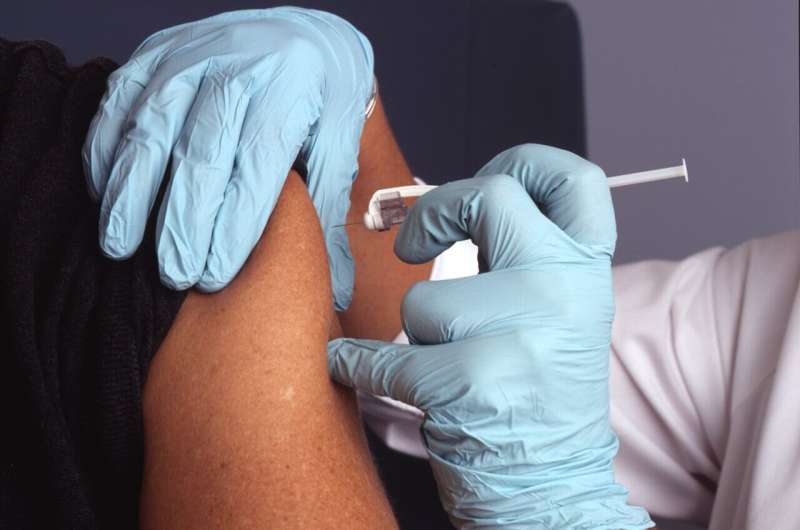
Since COVID-19 vaccines first became available to protect against infection and severe illness, there has been much uncertainty about how long the protection lasts, and when it might be necessary for individuals to get an additional booster shot.
Now, a team of scientists led by faculty at the Yale School of Public Health and the University of North Carolina at Charlotte has an answer: strong protection following vaccination is short-lived.
The study is the first to quantify the likelihood of future infection following natural infection or vaccination by the Moderna, Pfizer, Johnson & Johnson, or Oxford-AstraZeneca vaccines. The findings are published in the Proceedings of the National Academy of Sciences.
The risk of breakthrough infections, in which a person becomes infected despite being vaccinated, depends on the vaccine type. According to the study, current mRNA vaccines (Pfizer, Moderna) offer the greatest duration of protection, nearly three times as long as that of natural infection and the Johnson & Johnson and Oxford-AstraZeneca vaccines.
“The mRNA vaccines produce the highest levels of antibody response and in our analysis confer more durable protection than other vaccines or exposures,” said Jeffrey Townsend, the Elihu Professor of Biostatistics at Yale School of Public Health and the study’s lead author. “However, it is important to remember that natural immunity and vaccination are not mutually exclusive. Many people will have partial immunity from multiple sources, so understanding the relative durability is key to deciding when to provide a boost to your immune system.”
Dependable protection against reinfection requires up-to-date boosting with vaccines that are adapted to address changes in the virus that occur as part of its natural evolution over time, the researchers said.
“We tend to forget that we are in an arms race with this virus, and that it will evolve ways to evade both our natural and any vaccine-derived immune response,” said Alex Dornburg, assistant professor at the University of North Carolina at Charlotte, who led the study with Townsend. “As we have seen with the Omicron variant, vaccines against early virus strains become less effective at combating new strains of the virus.”
The researchers’ data-driven model of infection risks through time takes advantage of the striking similarities of reinfection probabilities between endemic coronaviruses (which cause “common colds”) and SARS-CoV-2, the virus that causes COVID-19. These similarities allowed the scientists to make longer-term projections than studies focused solely on current-day infections. Furthermore, the model placed antibody responses following natural and vaccine-mediated immunity into the same context, enabling comparison.
“SARS-CoV-2 mirrors other endemic coronaviruses that also evolve and reinfect us despite natural immunity to earlier strains,” said Townsend. “Continual updating of our vaccinations and booster shots is critical to our fight against SARS-CoV-2.”
Yale School of Public Health

